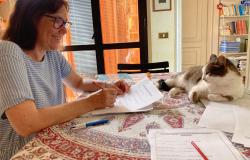 Seborga, nestled in the hills overlooking the Italian Riviera, may look like another of the sleepy little villages that are common when you move inland from the Ligurian coast.
Seborga, nestled in the hills overlooking the Italian Riviera, may look like another of the sleepy little villages that are common when you move inland from the Ligurian coast.
But Seborga's 362 inhabitants say they are actually an independent principality - the oldest in Europe.
They have their own currency, the luigino, which is accepted in the village shops and bars, their own stamps and their own flag - a white cross on a blue background. A sign at the entrance to the village reads 'Principality of Seborga'.
Naturally, Seborga also has a prince. He is Giorgio Carbone, 70, a former flower grower who was elected to the post by his fellow Seborghini 43 years ago. He is known as His Tremendousness Giorgio I.
Although the Italian state has not exactly taken the claims to independence seriously, Giorgio and his subjects do and they are now planning to seriously detach themselves from Italy. His Tremendousness Giorgio I told ANSA in an interview
that he and his ministers are talking to big insurance groups with a view to creating a health insurance and pension system for the community.
"Then we really will be independent," he said.
"We have nothing against Italy, it's just that we're not part of it and our administration should reflect that". Seborga was a principality of the Holy Roman Empire from 1079 until 1729, when it was acquired by Vittorio Amedeo of Savoy, Prince of Piedmont and King of Sardinia.
The 'Prince' claims that Seborga was not listed as a Savoy possession when Italy was united under the Savoy dynasty in 1861. It has, therefore, never been part of the modern Italian state, he argues. In the meantime, the people of Seborga continue to pay taxes to the Italian state and the village has a mayor, Franco Fogliarini, who like all other Italian mayors swears allegiance to the Republic.
He takes a laissez-faire attitude towards the activity and proclamations of Giorgio Carbone, partly because so many of the inhabitants seem to be behind him.
"If it helps bring in tourists, then it's fine by me," Fogliarini said, adding that there may well be some truth in Prince Giorgio's historical claims. Those claims, along with the rural charms of Seborga, certainly impressed one mysterious observer.
Prince Giorgio's ministers recently received a series of faxes from a self-declared royal who called herself Princess Yasmine von Hohenstaufen Anjou Plantagenet.
She claimed to be a descendant of the Hohenstaufens, the German princely family that ruled over the Holy Roman Empire in the 13th century. As such, she said, she was the rightful ruler of Seborga. Prince Giorgio dismissed her claim, voicing doubts over her lineage and asking why the only public trace of her existence was on the jumbled website of an unknown
'foundation'.
"Pah! No one's ever even seen her as far as I know. I call her the 'internet princess'," he said.
Earlier this week, the princess was quoted in the Italian press saying she had decided in the end to cede the territory to the Italian Republic. But the future of Seborga remains uncertain. Prince Giorgio said he wants its frontiers to expand in the future and foresees a thriving community of many thousands, attracting companies who would be given hefty tax advantages.
But he will not be the one to oversee all that. He said he is "tired" and intends to abdicate soon because "the throne has need of new energy".



